

19th century churchwardens and their families
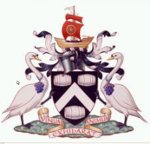 The family were wine merchants, and members of the Worshipful Company of Vintners (which continues to support two schools in Stepney) - Charles
senior was a Master, as a century or so later were his descendants
Frederick
(1899) and Barton (1900). Together with Samuel Foulger and Rector
Farington, he was responsible for insuring the contents of the parish
workhouse. His wife Elizabeth died in 1821, aged 62, at their house in
St George's Place (they had other residences elsewhere), and he in
1826, aged 66; both were buried in a vault in the crypt, together with Thomas Bradshaw (died 1802, aged 75) and two other without inscription.
The family were wine merchants, and members of the Worshipful Company of Vintners (which continues to support two schools in Stepney) - Charles
senior was a Master, as a century or so later were his descendants
Frederick
(1899) and Barton (1900). Together with Samuel Foulger and Rector
Farington, he was responsible for insuring the contents of the parish
workhouse. His wife Elizabeth died in 1821, aged 62, at their house in
St George's Place (they had other residences elsewhere), and he in
1826, aged 66; both were buried in a vault in the crypt, together with Thomas Bradshaw (died 1802, aged 75) and two other without inscription.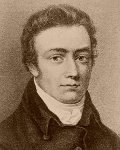 Charles Bradshaw Stutfield
(1794-1857) was baptized at St George-in-the-East. As a young man,
along with John Watson (who died of consumption in 1827), he was one of
Samuel Taylor Coleridge's [right] amanuenses for his Kantian-inspired work on Logic,
taking dictation from him at weekly sessions. Coleridge was godfather
to his daughter Mary Coleridge Stutfield in 1831. He had married Eliza
Lewis (of Crutched Friars in the City) in 1819, and in later life
corresponded with Sara Coleridge on various subjects, including 'early
marriage': she wrote to him in Hackney from Chester Place in 1848 (Memoir and Letters of Sara Coleridge p264):
Charles Bradshaw Stutfield
(1794-1857) was baptized at St George-in-the-East. As a young man,
along with John Watson (who died of consumption in 1827), he was one of
Samuel Taylor Coleridge's [right] amanuenses for his Kantian-inspired work on Logic,
taking dictation from him at weekly sessions. Coleridge was godfather
to his daughter Mary Coleridge Stutfield in 1831. He had married Eliza
Lewis (of Crutched Friars in the City) in 1819, and in later life
corresponded with Sara Coleridge on various subjects, including 'early
marriage': she wrote to him in Hackney from Chester Place in 1848 (Memoir and Letters of Sara Coleridge p264):| I have been much interested by your note; it really gives the pith and marrow of the case in pithy language. I agree to it all without reserve, except a partial one on a single point. You say that a "young man much occupied will not generally think of marriage till past thirty". I know a good many exceptions to that rule, I think. It seems to me, I own, that the time to form a marriage engagement, in an ordinary case, for a man, is between twenty and thirty. It is not so naturally, easily, or well done afterward. D—, who has had some experience of youth, laments exceedingly the difficulties in the way of early marriage for men, and my Uncle Southey was of the same mind. But the difficulties are often insuperable. What I like is to see a young man made ready to work hard, and ready to be married. Energy, energy, that is the thing — if it be kept in order by a religious mind. |
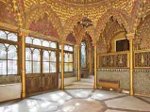 There were other
Stutfields around in the 19th century, presumably somehow related,
including 'William Stutfield the younger', formerly of Leinster Terrace,
Hyde Park, and of Mystole near Canterbury, then of Braham Castle near
Dingwall, Ross-shire and Netherdale House near Turriff in Banffshire,
who died in 1878; he was involved in in a Chancery case involving his
wife's estate in 1863 (Johnstone v Blake), and had two well-known barrister sons. Several Stufield solicitors were working in London in the early
20th century. There was also the organ builder Henry William Stutfield;
and a retired army officer J.C. Stutfield (d.1926), who in 1892-96 added an
elaborate Moorish music room to Grove House in Hampton [right - more details in English Heritage London List Yearbook 2010].
There were other
Stutfields around in the 19th century, presumably somehow related,
including 'William Stutfield the younger', formerly of Leinster Terrace,
Hyde Park, and of Mystole near Canterbury, then of Braham Castle near
Dingwall, Ross-shire and Netherdale House near Turriff in Banffshire,
who died in 1878; he was involved in in a Chancery case involving his
wife's estate in 1863 (Johnstone v Blake), and had two well-known barrister sons. Several Stufield solicitors were working in London in the early
20th century. There was also the organ builder Henry William Stutfield;
and a retired army officer J.C. Stutfield (d.1926), who in 1892-96 added an
elaborate Moorish music room to Grove House in Hampton [right - more details in English Heritage London List Yearbook 2010].| The Partnership which subsisted between Philip Splidt
and Christian Splidt, of Cable-Street, Saint George's in the East, in
the County of Middlesex, Rope-Makers, Hemp-Dealers, and Russia
Merchants, under the Firm of Philip and Christian Splidt, is and stands
dissolved as and from the 13th lnstant by mutual Consent. The Concern
will in future be carried on by Christian Splidt only, who is
exclusively to pay and discharge all the Debts and Engagements of the
said late Copartnership Estate, and to have, and receive all and every
of the Debts, Monies, and all other Effects belonging thereto.—Dated this
15th Day of October 1806. Philip Splidt. Christian Splidt. |
|
A Catalogue of the Curious and Valuable Library of the Late P. Splidt:
Among which are a Very Rare Collection of Books on Angling ... Also, His Mahogany Bookcase, Globes, &c., which Will be Sold by Auction, by Leigh and Sotheby on Monday, February 14th, 1814, and Five Following Days. |
| Suddenly, aged 55, Christian Splidt, esq., of Stratford Green, Essex, a Russia merchant, and who had been colonel of the St. George's volunteers. He was coming in the Stratford stage from his country seat at Stratford-green to his town residence in Spitalfields, when he was seized with a violent fit of sneezing and coughing while the coach was going along the Mile-end-road, which caused the rupture of a blood vessel, and he died almost immediately after he had been taken into a surgeon's shop. |
| as a charter party of affreightment is a mere personal contract, without seal, for the payment of freight, and an ideal and incorporeal thing, it cannot therefore be assigned; because it is not only a mere chose in action; but there being no privity between the freighter and the intermediate vendee, no action could be maintained by one against the other, and the vendor transfers none of his personal contracts or liabilities, whereas in the case of an abandonment, he does; and the wages of the master and crew, and repairs and all expenses of earning the freight are afterwards cast upon him. It is in effect a continuance of the same ownership. |
| BREWHOUSE-LANE, WAPPING Notice is hereby given, that the Partnership which subsisted between the undersigned George Lear, William Curtis, Timothy Abraham Curtis, William Sharp Handasyde, and Henry Hughes, was dissolved by mutual consent, so far as relates to the said Timothy Abraham Curtis, on the 31st day of. May 1811. —Witness our hands. Geo. Lear. William Curtis, Timy. Abm. Curtis, W. S. Handasyde, Hy. Hughes |
THOMAS ARMITAGE (warden 1803-07)
In 1773 (at an Old Bailey prosecution of John Padgett, when he was one
of three complaining of an assault) he was described as a cloathier of Kings Street, St George-in-the-East. From 1793 he insured, together with Elizabeth Ludeken
(widow of an earlier churchwarden) a house in New
Square, Minories - her home? Between 1803 and 1820 he insured his own home, as a gentleman,
the same address being variously described as '5 next the
George, New Road, Cannon Street Road'; 'near the
George Tavern, Back Lane, Ratcliffe'; '5 Back Lane, Ratcliffe'; '5
Jealous Row, New Road, Back Lane', together with other premises which
he owned - in Queen Street, Wapping (1803); Catherine Street,
Commercial Road (1808); 105 Ratcliffe Highway (1808, when he is
described as sugar refiner);
Humberstone [Umberston] Street, Commercial Road (1809); '14-17, at the
corner of Marmaduke Street and William Street, Cannon Street
Road' (1819);19 Kings Place, Commercial Road (1820). In 1817 he
was one of a large numer of freeholders summoned for jury service for
the celebrated treason trail of Arthur Thistlewood and others, but was excused on account of illness (as was John
Henry Wackerbath, a local sugar refiner).
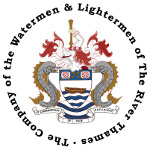 HENRY WILLIAM HOBBS (warden 1806-08) and WILLIAM HENRY HOBBS (warden 1821-22)
HENRY WILLIAM HOBBS (warden 1806-08) and WILLIAM HENRY HOBBS (warden 1821-22)|
Mr HENRY WILLIAM HOBBS, a Lighterman, called in, and examimed.
How long have you been a Lighterman? Eighteen Years.Are you acquainted with the Sufferance Wharfs and legal Quays, and the Nature of the Business carried on there? Yes; but more particularly at the Sufferance Wharfs. [These were additional wharves on the south side of the river, with the same legal rights as the legal wharves but existing 'on sufferance', in an attempt to deal with overcrowding.] What do you judge to be the chief Inconveniencies which the Trade of the Port of London labours under in respect to the landing and shipping of Goods? I beg to remark, that the Want of a sufficient Number of Landing Waiters, and the great Number of Holidays kept at the Custom House, are the chief Inconveniencies. Have you ever refused to lighter for Ships, the Cargoes of which were intended to be landed at the legal Quays? I have. Have you ever lightered any of those Cargoes at the Sufferance Wharfs? I have. How came you to refuse to lighter them at the legal Quays, and then to take them to the Sufferance Wharfs? Because I could not get them properly dispatched at the legal Quays; and I lightered them to the Sufferance Wharfs for the better Dispatch of the Merchants Property. — I have done so with several West India Ships Cargoes. Is there ever any Want of Room or Accommodation for landing or housing Goods at the Sufferance Wharfs, except through the Want of Officers? I have not heard of any such Want of Room or Accommodation since the Year 1793, and that only existed for a small Time, a Month or Six Weeks, during the Arrival of several Fleets at one Time. Did any Accident ever happen to a Lighter of yours, loaded with Hemp, at Brown's Quay? Yes — on the 28th of December 1790 I lightered Hemp to Brown's Quay; we moored her alongside the Wharf, and no other Craft was there — she remained there till the 30th at Night — on that Night she was cast adrift by some Persons unknown — this cost me £600 to repair the Damage of my Lighter, and the Merchant's Loss, which would not have happened if the Officers had been there to have discharged her in proper Time.— She should have been discharged on the 29th.— I had given due Notice to the Clerks at the Compting House of the Wharf; but whether the Clerk applied to the Revenue Officers or not I do not know. Does it often happen that Craft wait at the Sufferance Wharfs so long, for want of Revenue Officers? Not when a single Craft. What Regulations do you judge to be wanting in order to remedy the Inconveniencies you have stated, and to give due Dispatch in the landing and shipping Goods? — A greater Number of Landing Waiters ought to be appointed to the Sufferance Wharfs; and this, with the Holidays curtailed, I think would remedy most of the inconveniences now complained of. |
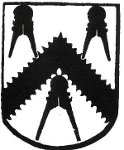 James was a citizen and carpenter of London by virtue of his membership of the Worshipful Company of Carpenters.
There are records payment of his 'quarteridge' - dues on the four
quarter days (Lady Day, St John's Day, Michaelmas and Christmas) - of
between 2 and 6 shillings. He took on apprentices, typically for
a consideration of £10: for example, in 1777 William Chapman from
Hertford (a bargemaker's son), in 1780 Thomas Smith, son of a local
brickmaker, and in 1786 Thomas Wheeler, also local. In 1778 his servant
Mary Stacey made a deposition in the salacious libel/divorce case of
John and Harriet Burt, where Harriet's naked and outstretched legs were
much referred to in evidence. In 1800 he was renting property in Wapping
Street [Lane] from Thomas Robins and Mrs James, but by 1811, when the
building of the docks had changed the local scene, owned and insured
property in Fawdon Fields, off Old Gravel Lane (with another property
in Pearl Street by the 1820s, as carpenter and builder).
James was a citizen and carpenter of London by virtue of his membership of the Worshipful Company of Carpenters.
There are records payment of his 'quarteridge' - dues on the four
quarter days (Lady Day, St John's Day, Michaelmas and Christmas) - of
between 2 and 6 shillings. He took on apprentices, typically for
a consideration of £10: for example, in 1777 William Chapman from
Hertford (a bargemaker's son), in 1780 Thomas Smith, son of a local
brickmaker, and in 1786 Thomas Wheeler, also local. In 1778 his servant
Mary Stacey made a deposition in the salacious libel/divorce case of
John and Harriet Burt, where Harriet's naked and outstretched legs were
much referred to in evidence. In 1800 he was renting property in Wapping
Street [Lane] from Thomas Robins and Mrs James, but by 1811, when the
building of the docks had changed the local scene, owned and insured
property in Fawdon Fields, off Old Gravel Lane (with another property
in Pearl Street by the 1820s, as carpenter and builder).MATTHEW MOODY (warden 1812-13)
Matthew Moody was an ironmonger, with
premises in Old Gravel [now Wapping] Lane, which he insured from his
time as warden and beyond. He was appointed a Captain of St
George-in-the-East Volunteer Infantry. As a freeholder (with
premises in Holborn) he had been included among the list of voters
for the 1802 Parliamentary election for Middlesex. In that year, we find him taking
over the effects of the late Jeremiah Hedley, anchorsmith of Lower
Shadwell, and paying out a final dividend to his creditors. As well
as serving as churchwarden, he was actively involved in the
management of the Raine's Foundation Schools, and in 1819 gave
extensive evidence to the Commission on the Education of the Poor.
PARKER JOHN HARRISON (warden 1814-16)

 was
a carpenter, son of Thomas Harrison, who served his apprenticeship with
John Teppass of Tower Hill and gained his freedom in 1788 [left: unclear
whether this was by 'redemption', 'patrimony' or 'the testimony of his
master' - the normal routes ending an apprenticeship]. He became
Master of the Worshipful Company of Carpenters in 1831, and died in 1849, aged 82, at his home in Sutton Street.
was
a carpenter, son of Thomas Harrison, who served his apprenticeship with
John Teppass of Tower Hill and gained his freedom in 1788 [left: unclear
whether this was by 'redemption', 'patrimony' or 'the testimony of his
master' - the normal routes ending an apprenticeship]. He became
Master of the Worshipful Company of Carpenters in 1831, and died in 1849, aged 82, at his home in Sutton Street.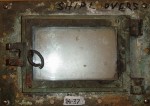 GEORGE ARMSTRONG (warden 1817-18)
GEORGE ARMSTRONG (warden 1817-18)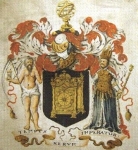 Samuel Junior, though trading as a chemist and druggist, was admitted to the Worshipful Company of Clockmakers
in 1812. He was probably an amateur clockmaker, but some of the livery
companies admitted a proportion of members from other trades, and the
apprentices he took on through the Company were trained in the emerging
profession of pharmacy. They included in 1816 William Forrester
Portello - for seven years, at a premium of £157 10s. - who in 1842
became a founder member of the Pharmaceutical Society,
practising in Farnham; in 1819 Alfred Theodore Essex, a doctor of music
from Kensington, who later emigrated to Sarnia in Ontario and practised
there; and in 1823 John Genery, a schoolmaster of Bethnal Green - both
of these for seven years, at a premium of £210.
Samuel Junior, though trading as a chemist and druggist, was admitted to the Worshipful Company of Clockmakers
in 1812. He was probably an amateur clockmaker, but some of the livery
companies admitted a proportion of members from other trades, and the
apprentices he took on through the Company were trained in the emerging
profession of pharmacy. They included in 1816 William Forrester
Portello - for seven years, at a premium of £157 10s. - who in 1842
became a founder member of the Pharmaceutical Society,
practising in Farnham; in 1819 Alfred Theodore Essex, a doctor of music
from Kensington, who later emigrated to Sarnia in Ontario and practised
there; and in 1823 John Genery, a schoolmaster of Bethnal Green - both
of these for seven years, at a premium of £210. | (Mr. Sharpe) — The next case
is Mr. Foulger, a chemist, at No.133, Ratcliffe-highway; the rise is
from 28s. to 50s; a chemist of the ordinary size of those in
Shoreditch, without any additional consumption. A wholesale chemist? — He is a working chemist; he has a laboratory. I wish to make an observation here, that Mr. Hill, in Shoreditch, lives in a similar sized house and is only charged 30s.; he has also a laboratory; he is a working chemist also; Mr. Knight in Norton Falgate, who has a large business as a chemist, is only charged 30s. I have a reason for stating Mr. Knight not being raised, he is situated where a competition could take place, and therefore he is protected by that, but with respect to the other, I do not conceive that a laboratory will make a rise in one house and not in another, except for special reasons. (Mr. Pickering) — If Mr Hill has a laboratory in Shoreditch we know nothing of it. Mr. Hill always paid 30s. What is the reason of Mr. Hill being raised from 21s. to 30s.? — (Mr. Rowe) Mr. Hill paid 30s. to the New River in 1810. (Mr. Pickering) — That in Ratcliffe-highway ought not to be put in comparison of this, which has a use for water which we knew nothing of. (Mr. Sharpe) — I merely ask, if one chemist with a similar practice to the other is charged 50s. why was the other charged 30s.? (Mr. Steevens) — Foulger is a working chemist and a little distiller; for chemists in a large way have a still or two, or three, (I cannot speak to the number, but take it at two); it is well known to every one, and particularly to Mr. Sharpe, who is a good chemist, that chemists use a great deal of water; indeed, I heard a distiller say, if you turned all you pumped up to the worm tub it would not be too much; it is the case with all chemists, where the water falls in and out of the worm tub, and in the case of distillers, where the water flows in as it does to a worm tub and out again, without having been received in any regular back, it is difficult to say the quantity they are consuming; and under those circumstances I have no hesitation in saying, that all distillers and chemists or any other person using a still are under-rated. Was he a distiller when charged 28s.? — I dare say he was, though we had no been told of it.
Mr. Robert Wright, Called in; and Examined.
You are collector of Ratcliffe-highway? — Yes; previous to the rise, the houses in Ratcliffe-highway was from 28s. to 30s. Did that include trades? — Without trades. (Mr. Sharpe) — I am sorry I had not the opportunity of giving this ease to Mr. Pickering, but he will speak to it hereafter. I know that Mr. Foulger is not a distiller. Great chemists distil a little, by their own evidence; I do not think this is a fair charge; the impression upon my mind; as one of the public, was that those charges which I have now enumerated were exorbitant, and we thought it much more so, comparing it with a letter, which I beg leave to read to the Committee, it is signed T.N. Pickering, chief clerk and secretary, dated East London waterworks office, December 1st 1817, immediately preceding the rise .... |
 A generation later, Samuel Foulger and Son were trading as wholesale druggists. An interesting cross-over with the family's other trade emerged in the 1860s. Zinc oxide
was used then, as now, in a variety of ointments and creams for skin
conditions, and was manufactured for medical use by combustion or
roasting, but this product was impure. A purer form, made by
sublimation, was being produced in large quantities by Thomas Hubbuck
and Son, established in 1765, who had patented a white zinc paint
widely used on ships. Their offices were in Lime Street, in the City,
as were those of John Foulger and Sons - see below - and Samuel's firm
was among those who supplied this purer form of zinc oxide to the
pharmaceutical trade. Hubbucks supplied it in minimum quantities of a
quarter of a ton; their authorised suppliers sold it in 14lb boxes. See
left for more details. In 1883
Samuel Foulger & Son was among the old-established firms taken over
by Willows & Francis, which in turn merged with other
pharmaceutical companies as detailed here.
A generation later, Samuel Foulger and Son were trading as wholesale druggists. An interesting cross-over with the family's other trade emerged in the 1860s. Zinc oxide
was used then, as now, in a variety of ointments and creams for skin
conditions, and was manufactured for medical use by combustion or
roasting, but this product was impure. A purer form, made by
sublimation, was being produced in large quantities by Thomas Hubbuck
and Son, established in 1765, who had patented a white zinc paint
widely used on ships. Their offices were in Lime Street, in the City,
as were those of John Foulger and Sons - see below - and Samuel's firm
was among those who supplied this purer form of zinc oxide to the
pharmaceutical trade. Hubbucks supplied it in minimum quantities of a
quarter of a ton; their authorised suppliers sold it in 14lb boxes. See
left for more details. In 1883
Samuel Foulger & Son was among the old-established firms taken over
by Willows & Francis, which in turn merged with other
pharmaceutical companies as detailed here. 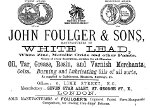
 As for the other family trade: John, the oil and colourman (who in the 1830s subscribed to the London Society for the Improvement & Encouragement of Female Servants
- founded in 1813, offering financial rewards and bibles, and later
keeping a register of trustworthy servants), together with his sons,
expanded their business as paint suppliers, in due course with an
office in the City and the manufactory remaining at Seven Star Alley [1878 Vestry map left].
In 1873 they were advertising their white lead and other products. Right is a company advertisement of 1903. By 1925 they had moved their office to 27 St Clement's Lane EC4, and were described as paint and varnish manufacturers, oil, tallow, pitch, tar, paint and varnish manufacturers &c;
the company went public, with a nominal capital of £7,000 in £1 shares
(2,000 5% cumulative preference and 5000 ordinary). The patriarch of
the family at this stage was William Foulger, who died in 1925 - see here for the Rector's comments on his splendid old world courtesy,
despite the difficulties of trade after the First World War (to which
the above was presumably a response), and family illness. The company
survived until 1964 (with offices at 51 Bishopsgate EC2), when it went
into liquidation.
As for the other family trade: John, the oil and colourman (who in the 1830s subscribed to the London Society for the Improvement & Encouragement of Female Servants
- founded in 1813, offering financial rewards and bibles, and later
keeping a register of trustworthy servants), together with his sons,
expanded their business as paint suppliers, in due course with an
office in the City and the manufactory remaining at Seven Star Alley [1878 Vestry map left].
In 1873 they were advertising their white lead and other products. Right is a company advertisement of 1903. By 1925 they had moved their office to 27 St Clement's Lane EC4, and were described as paint and varnish manufacturers, oil, tallow, pitch, tar, paint and varnish manufacturers &c;
the company went public, with a nominal capital of £7,000 in £1 shares
(2,000 5% cumulative preference and 5000 ordinary). The patriarch of
the family at this stage was William Foulger, who died in 1925 - see here for the Rector's comments on his splendid old world courtesy,
despite the difficulties of trade after the First World War (to which
the above was presumably a response), and family illness. The company
survived until 1964 (with offices at 51 Bishopsgate EC2), when it went
into liquidation.  Several generations were members of the Worshipful Company of Pewterers
(by the late 18th century, when demand for pewter vessels had fallen
with the change in drinking habits, the number of members working in
the pewter trade became less.) Philip, admitted 1788, was a Warden in
1818, and Master in 1820; 'Philip Crellin junior', admitted 1814, was a
Warden in 1832, 1835 and Master in 1837; 'Philip Crellin junior' [his
son] was a Warden in 1857, 1862 and Master in 1863; Horatio Nelson
Crellin [sic] was a Warden in 1843, 1845, and Master in 1846, and
[another] Horatio Nelson Crellin was a Warden in 1887, 1889 and Master
in 1890; Frederick William Crellin was a Warden in 1900 and 1901, and
Master in 1902.
Several generations were members of the Worshipful Company of Pewterers
(by the late 18th century, when demand for pewter vessels had fallen
with the change in drinking habits, the number of members working in
the pewter trade became less.) Philip, admitted 1788, was a Warden in
1818, and Master in 1820; 'Philip Crellin junior', admitted 1814, was a
Warden in 1832, 1835 and Master in 1837; 'Philip Crellin junior' [his
son] was a Warden in 1857, 1862 and Master in 1863; Horatio Nelson
Crellin [sic] was a Warden in 1843, 1845, and Master in 1846, and
[another] Horatio Nelson Crellin was a Warden in 1887, 1889 and Master
in 1890; Frederick William Crellin was a Warden in 1900 and 1901, and
Master in 1902.  Because
two Philips, father and son, were styled 'junior' at different stages,
and probably worked together for a time in the City, it's not entirely
clear to which of them some of the following activities refer. Tupling
and Crellin were accountants at 96 Newgate Street, and Philip (with a
home address at Thyssen Terrace, Lower Clapton in 1858) was a director
of the Whittington Life Assurance Company,
originally at 14 St Clements Lane (where the younger Philip had an
office for a time) but then at 37 Moorgate Street. [It was taken over
by the National Life Assurance Society in 1894 after three years of negotations.] In the 1850s 'Philip' was an Executive Committee member of the Society for the Liberation of Religion from State Patronage and Control
(which from 1844-53 had been the British Anti-State Church Association,
pressing the case for disestablishment of the church, and later was
generally referred to as the 'Liberation Society'). This was perhaps an
odd enthusiasm for a conventional Anglican [if indeed that is what he
was] - see this
speech by the Congregationalist minister Edward Miall - but its offices
were at 2 Sergeants Inn, Fleet Street, where again the younger Philip
had another office for a time. In 1859 'Philip' was a member of the Metropolitan Board of Works,
representing St George-in-the-East district but living at 2 Clapton
Square, Hackney. It was from this address that a daughter Mary was
married in 1860 to J. Langdon H. Down MD of Redhill.
Because
two Philips, father and son, were styled 'junior' at different stages,
and probably worked together for a time in the City, it's not entirely
clear to which of them some of the following activities refer. Tupling
and Crellin were accountants at 96 Newgate Street, and Philip (with a
home address at Thyssen Terrace, Lower Clapton in 1858) was a director
of the Whittington Life Assurance Company,
originally at 14 St Clements Lane (where the younger Philip had an
office for a time) but then at 37 Moorgate Street. [It was taken over
by the National Life Assurance Society in 1894 after three years of negotations.] In the 1850s 'Philip' was an Executive Committee member of the Society for the Liberation of Religion from State Patronage and Control
(which from 1844-53 had been the British Anti-State Church Association,
pressing the case for disestablishment of the church, and later was
generally referred to as the 'Liberation Society'). This was perhaps an
odd enthusiasm for a conventional Anglican [if indeed that is what he
was] - see this
speech by the Congregationalist minister Edward Miall - but its offices
were at 2 Sergeants Inn, Fleet Street, where again the younger Philip
had another office for a time. In 1859 'Philip' was a member of the Metropolitan Board of Works,
representing St George-in-the-East district but living at 2 Clapton
Square, Hackney. It was from this address that a daughter Mary was
married in 1860 to J. Langdon H. Down MD of Redhill.



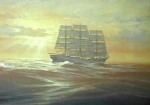 The whaler and transport ship Salamander, a wooden vessel of 320 tons built on the Thames in 1776, owned by Joseph (or P.?) Mellish - similar vessel pictured right in full sail - was
one of the 'third fleet' taking convicts to Australia (John St Barbe, whaling investor and convict contractor, was one of the
backers). She departed from Plymouth in March 1791 with 160 male
convicts and 12 soldiers of the New South Wales Corps; they arrived at
Port Jackson 147 days later, five convicts having died en route. After a brief layover in Sydney she sailed to Norfolk Island
(aka Botany Bay) where most convicts disembarked to serve their
sentences. From there she went whaling, as part of the first European
whaling voyage in Australian waters (killing a 'forty barrel' whale off
Port Jackson but losing it by bad weather), and returned to England via
India. Returning to Australia the following year, she entered and
charted Port Stephens - and Salamander Bay there is named for her.
Since 2004 the Salamander Project has been tracing the subsequent lives of many of the convicts.
The whaler and transport ship Salamander, a wooden vessel of 320 tons built on the Thames in 1776, owned by Joseph (or P.?) Mellish - similar vessel pictured right in full sail - was
one of the 'third fleet' taking convicts to Australia (John St Barbe, whaling investor and convict contractor, was one of the
backers). She departed from Plymouth in March 1791 with 160 male
convicts and 12 soldiers of the New South Wales Corps; they arrived at
Port Jackson 147 days later, five convicts having died en route. After a brief layover in Sydney she sailed to Norfolk Island
(aka Botany Bay) where most convicts disembarked to serve their
sentences. From there she went whaling, as part of the first European
whaling voyage in Australian waters (killing a 'forty barrel' whale off
Port Jackson but losing it by bad weather), and returned to England via
India. Returning to Australia the following year, she entered and
charted Port Stephens - and Salamander Bay there is named for her.
Since 2004 the Salamander Project has been tracing the subsequent lives of many of the convicts.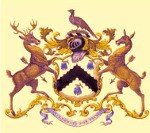 JAMES MASSINGHAM (warden 1827-29)
JAMES MASSINGHAM (warden 1827-29)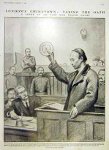 From 1799-1804 John Anthony
(1766-1805) had a similar contract - and had married Abraham's daughter
Sarah. He was the first Chinese person to become a naturalised
Englishman, by private Act of Parliament [right taking the oath],
just a few months before his
sudden death. He claimed to have settled in Britain 'after the American War'. The
lascars trusted him, and he had prospered, and as well as a house at 4
Angel Gardens, Shadwell he had a home at Hallowell Down, Leyton, where he
kept a Chinese steward, Wing. At the Old Bailey
in 1800, he and Abraham Gole supported a lascar employee named Awing,
who was the victim of a burglary at
Angel Gardens (where items of Gole's property were also stolen): William Rayner,
aged 27, was sentenced to death but his accomplice Charles Moren was
acquitted. Six years before his death John Anthony became a Christian,
baptized at St Paul Shadwell and on his instruction buried there. There
is more about him here.
From 1799-1804 John Anthony
(1766-1805) had a similar contract - and had married Abraham's daughter
Sarah. He was the first Chinese person to become a naturalised
Englishman, by private Act of Parliament [right taking the oath],
just a few months before his
sudden death. He claimed to have settled in Britain 'after the American War'. The
lascars trusted him, and he had prospered, and as well as a house at 4
Angel Gardens, Shadwell he had a home at Hallowell Down, Leyton, where he
kept a Chinese steward, Wing. At the Old Bailey
in 1800, he and Abraham Gole supported a lascar employee named Awing,
who was the victim of a burglary at
Angel Gardens (where items of Gole's property were also stolen): William Rayner,
aged 27, was sentenced to death but his accomplice Charles Moren was
acquitted. Six years before his death John Anthony became a Christian,
baptized at St Paul Shadwell and on his instruction buried there. There
is more about him here. |
Mr. Abraham Gole, Churchwarden of St. George's in the East.
I have been in office as churchwarden four years and as trustee twelve years.We have now no assistant overseer. We have had four in our parish during seven years. They were appointed by the board, but they have each turned out badly, and we have been compelled to discharge them. Inquiries into the cases of paupers are made by our two beadles. I am of opinion that there is too much to do in the way of investigation for any unpaid officer to accomplish. In our district and the vicinity the demand for labour has of late years been greatly reduced. The competition of the dock companies has reduced profits; they have reduced the wages of labour and the number of labourers; their engines have suspended labour. In rope making, and other branches of manufacture, improvements have had the same tendency to reduce the quantity of labour, and notwithstanding the increased amount of tonnage, there can be no doubt that the total demand for labour used in the district has to been greatly reduced, Out-door Relief to able-bodied Papuers In our parish we have long found it absolutely necessary to give relief to able-bodied labourers out of employment. We give, as casual relief, never more than 1s. to a single man; if he has a wife and one or two children, we may give from 1s.6d. to 2s.; if he has a large family, 3s. As permanent relief, we give to a
Mode of investigation The only visitation of the cases of pensioners or casual poor, is when the overseer suspects that there is reason for a visit; he directs the beadle to make a visit, and report to him, the overseer. Sometimes the same direction is given by the board of trustees. The impression on my mind is, that the beadle inquires into about a dozen cases in the course of the week,. by order of the overseers or the boards of trustees. In the cases of casual relief a great deal is taken on trust, but inquiry is made into every case where the party applies to be taken on the permanent list. Character of the paupers What proportion of these cases do you judge from your own experience to be cases of blameless want; that is, want resulting from causes which no common prudence, no prudence of the nature of that which may be found amongst the labouring classes, could avert? -— In the investigation of cases, I should say, that I have not found above 25 per cent of cases of blameless want: in saying this, I think I give a liberal average. Effects of the Magistrates' refusal to interfere Formerly we had numbers of bad characters imposed upon us by the interference of the magistrates; they ordered us to relieve cases of the worst description. But a change in the administration of the poor laws has taken place in this district, and the overseers and parish officers are now left to their uncontrolled discretion. Mr. Walker, the magistrate of Lambeth-street, as much as possible avoids interfering. The only effect produced at first was some discontent amongst the sturdy and dissolute paupers. These characters, who had been in the habit of receiving casual relief, got less relief when the change took place, and the influx of new claimants of this description was considerably checked. On the whole, the change was much for the better; the deserving poor were as well attended to as ever, while the sturdy impostors were totally rejected. We have 84 paupers in our workhouse, and we find, notwithstanding the space is large, that room for classification is much wanted. |

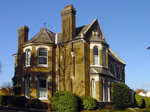 John
Knight was born in 1792 in Hertfordshire. He married Phoebe Fitchett in
1817 at St Dunstan Stepney, the same year that he set up in business
locally as a soap manufacturer. They had six sons (Abner died young)
and a daughter (also Phoebe). He was listed as soap maker and oil merchant (1836) and oilman, soap manufacturer and tallow chandler
(1838), of Babylon House, 9 York Place and 156 Old Gravel Lane in
Wapping. By 1844 the company was producing Royal Primrose soap [left],
and won a medal at the 1851 Great Exhibition; soon they were employing
150 people and producing 2-3,000 tons of soap a year. But the following
year John senior dissolved the partnership with his five sons (John,
William, John Burgess, Edwin, Alfred and Ambrose), retiring to 55
Chigwell Street in Chigwell and shortly before his death in 1864 - by
then a very wealthy man - built Hainault House, (right, now a Grade 2 listed building, and a girls' boarding house of Chigwell School). His headstone at Chigwell parish church reads
John
Knight was born in 1792 in Hertfordshire. He married Phoebe Fitchett in
1817 at St Dunstan Stepney, the same year that he set up in business
locally as a soap manufacturer. They had six sons (Abner died young)
and a daughter (also Phoebe). He was listed as soap maker and oil merchant (1836) and oilman, soap manufacturer and tallow chandler
(1838), of Babylon House, 9 York Place and 156 Old Gravel Lane in
Wapping. By 1844 the company was producing Royal Primrose soap [left],
and won a medal at the 1851 Great Exhibition; soon they were employing
150 people and producing 2-3,000 tons of soap a year. But the following
year John senior dissolved the partnership with his five sons (John,
William, John Burgess, Edwin, Alfred and Ambrose), retiring to 55
Chigwell Street in Chigwell and shortly before his death in 1864 - by
then a very wealthy man - built Hainault House, (right, now a Grade 2 listed building, and a girls' boarding house of Chigwell School). His headstone at Chigwell parish church reads|
Sacred to the
memory of John Knight of Hainault House in this parish & for many
years a Resident of St. Georges in the East
who was born at Barkway in
the county of Hertford on Christmas day in the Year of our Lord 1792
|

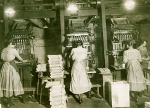
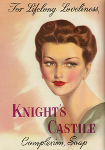
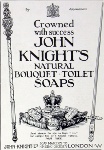 His sons continued the business as John Knight Ltd, and moved to a riverside factory in Knights Road, West Silvertown in 1880 [left between the wars, and packers earlier in the century].
Its name - the Royal Primrose Works - was misleading: the smell from
the mountains of animal carcases, and the production of glues,
fertilisers and adhesives as well as soap was not exactly
aromatic... The Booth survey
interviewed the company along with many others in the same trade. In
1906 it re-registered as John Knight and Sons, soap makers and
perfumers and later became a subsidiary of Lever Brothers (now
Unilever). In the 1920s they were advertising Soap; Household, Laundry [including Hustler washing soaps], Perfumed,
Soft, Medicinal, Shaving, Flakes, Powder; Dye Soap. Toilet
Preparations; Glue; Tallow; Edible Dripping; Edible Oils; Oil Cake for
Cattle Feeding [compare a 1922 advertisement, right].
The factory was bombed on the first night of the Blitz, and rebuilt; by
the end of the 1950s it had over 1,200 employees. Their most famous
product was Knight's Castile soap, introduced in 1919 [1950 advertisement right].
Manufacture of the brand transferred to Elida Gibbs in 1997 after Unilever
reorganised its portfolio, and the Gumption Company took it over
in 2001.
His sons continued the business as John Knight Ltd, and moved to a riverside factory in Knights Road, West Silvertown in 1880 [left between the wars, and packers earlier in the century].
Its name - the Royal Primrose Works - was misleading: the smell from
the mountains of animal carcases, and the production of glues,
fertilisers and adhesives as well as soap was not exactly
aromatic... The Booth survey
interviewed the company along with many others in the same trade. In
1906 it re-registered as John Knight and Sons, soap makers and
perfumers and later became a subsidiary of Lever Brothers (now
Unilever). In the 1920s they were advertising Soap; Household, Laundry [including Hustler washing soaps], Perfumed,
Soft, Medicinal, Shaving, Flakes, Powder; Dye Soap. Toilet
Preparations; Glue; Tallow; Edible Dripping; Edible Oils; Oil Cake for
Cattle Feeding [compare a 1922 advertisement, right].
The factory was bombed on the first night of the Blitz, and rebuilt; by
the end of the 1950s it had over 1,200 employees. Their most famous
product was Knight's Castile soap, introduced in 1919 [1950 advertisement right].
Manufacture of the brand transferred to Elida Gibbs in 1997 after Unilever
reorganised its portfolio, and the Gumption Company took it over
in 2001.The Liquorish family's roots were in Sudbury, Suffolk. William senior was born there in 1748, and became a freeman of Ipswich, but had Tower Hamlets connections – he was a corporal in the Tower Hamlets Militia in the 1790s. He had two sons, both born in Sudbury (moving between Suffolk and London), shoemakers by trade, engaged in military service, and musical. William junior was born in 1772, and served with the Westminster Militia from 1793, the Tower Hamlets Militia from 1797-1808 and the West Suffolk Militia (enlisting at Liverpool, aged 39) from 1811, serving in the Peninsular war (for which he was awarded the Peninsular medal), at Vittoria, the Pyrenees, the second siege of Sebastapol, Ortez, and Toulouse. Invalided out as a non-resident of the Chelsea Hospital in 1824, due to 'paralysis of lower extremities and left arm', in 1796 he composed a Quick-Step and Military March for the Tower Hamlets Militia. He lived in Hoxton until his death in 1852 at Shoreditch. His brother Thomas joined the Tower Hamlets Militia in 1799 at the age of 13; in 1807 he was admitted by patrimony as a freeman of Ipswich, but from 1814-39 lived at Chapel Street, and by 1810 was Master of the Tower Hamlets band until the Militia was disbanded in 1816; he too moved to Hoxton, and died there in 1842, having cut his own throat, in 1842.
What relation was the
Thomas Liquorish who became a churchwarden, born in Leicestershire,
and the landlord of the Ship Tavern in Anthony Street
(numbering variously given as 11, 13 and 84)? With his wife Elizabeth
[or Martha] ???? he had eleven children. (We recently heard from a
family one of whose ancestors – no relation – was born in the pub
during his time.) He was
elected as warden by those opposed to Bryan King. He was the senior
warden at the time of the 1845 Requisition meeting, chairing the
public vestry on 15 March - see the text and comment here.
Afterwards an absurd declaration was made that
the Protestant Cause has triumphed over the Tools of Jesuitical
Tyranny by the Glorious majority of 76 in favour of Messrs Liquorish
and Bond, the true friends of the Church and of Civil and Religious
Liberty. In 1847 he put his name to a 'presentment', published in The Times
of 8 January on behalf of the wardens, stating the unhappiness of the
parishioners, and alleging marriage and baptism irregularities -
unconvincingly, since King was rigorous in complying with the
requirements: they are discussed here.
Like many other wardens of this parish at that time, he was a Liberal
in politics, and a member of the committee of no less than 332 (with
power to add more should they choose) formed in 1852 to secure the
re-election of Sir William Clay as MP (successfully: he served from 1823-57), based on the resolution That
the unvarying attention of Sir William Clay to the local interests of
the Borough, his steady support of the principles of civil and
religious liberty, and his early, zealous, and consistent advocacy of
Free-trade, entitle him to the continued confidence and cordial support
of the constituency of the Tower Hamlets. Among the 24 names from 'our Hamlet' were wardens John Chatwood (and John Chatwood jnr), Richard Carpenter, Samuel Foulger, John Sander, John James Bond, B.F Skelton, T.M. Fairclough, Thomas Barnett (warden 1848-49), Andrew Wilson, Dr E.A. Cory and Robert Nicholson.
Liquorish was also vice-chairman of St George's Union (workhouse), with J. Gill as chairman. The Times reported his death at the Ship Tavern on 2 March 1854, deeply regretted by a numerous circle of friends. His wife took on the tenancy of the Ship Tavern after his death.
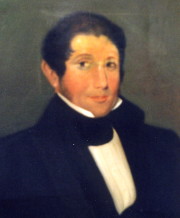 Some
family background: John Lawton (c1673-1754)
lived in Ratcliffe Highway (probably no.19) on the eastern corner of
Essex (later Artichoke) Hill from at least 1730. A salesman, he
acquired property in and around The Highway and a country estate at
Loughton, Essex. Outliving all his sons, he left his property to his
grandson John Rogers Lawton, and on his early death it was divided
amongst his four young daughters, and hence eventually to their
husbands. John Lawton' great-grand-daughter Fanny (married to a coal factor and
living in Canterbury Square, Southwark) passed her share to her only
daughter's children. Their father, Joseph Messenger, a retired sea
captain from St Bees, Cumbria, was a pawnbroker at 177 Ratcliffe
Highway between 1812/14 and his death in 1826. The properties were
equally divided between Joseph's sons William (in New Zealand) and
Frank (in Australia) and his daughter Jane, who had married John James
Bond, cabinet maker and undertaker, who lived across the road at 24 Ratcliffe Highway. His father Benjamin Bond (c1752-1833), cabinet-maker, appraiser and furniture broker, had
lived at this address since at least 1761. and attended St
George-in-the-East: both his wives and all but one of his children were
buried there, and he was the largest rentpayer in The Highway, so
surely involved in the Vestry; he also owned a house in Dorking. John
James (1805-1858) was born there, but was living at no.24 at the time
of the Marr Murders, and in May 1835 served from this address as a juror
at the Old Bailey.The 1851 census lists him as a widower, cabinet maker, aged
47, living with his teenage son and daughter, a
housekeeper and a general servant, at 24 Ratcliff Highway (portrait left between his marriage in 1827 and his wife's death in 1839).
Some
family background: John Lawton (c1673-1754)
lived in Ratcliffe Highway (probably no.19) on the eastern corner of
Essex (later Artichoke) Hill from at least 1730. A salesman, he
acquired property in and around The Highway and a country estate at
Loughton, Essex. Outliving all his sons, he left his property to his
grandson John Rogers Lawton, and on his early death it was divided
amongst his four young daughters, and hence eventually to their
husbands. John Lawton' great-grand-daughter Fanny (married to a coal factor and
living in Canterbury Square, Southwark) passed her share to her only
daughter's children. Their father, Joseph Messenger, a retired sea
captain from St Bees, Cumbria, was a pawnbroker at 177 Ratcliffe
Highway between 1812/14 and his death in 1826. The properties were
equally divided between Joseph's sons William (in New Zealand) and
Frank (in Australia) and his daughter Jane, who had married John James
Bond, cabinet maker and undertaker, who lived across the road at 24 Ratcliffe Highway. His father Benjamin Bond (c1752-1833), cabinet-maker, appraiser and furniture broker, had
lived at this address since at least 1761. and attended St
George-in-the-East: both his wives and all but one of his children were
buried there, and he was the largest rentpayer in The Highway, so
surely involved in the Vestry; he also owned a house in Dorking. John
James (1805-1858) was born there, but was living at no.24 at the time
of the Marr Murders, and in May 1835 served from this address as a juror
at the Old Bailey.The 1851 census lists him as a widower, cabinet maker, aged
47, living with his teenage son and daughter, a
housekeeper and a general servant, at 24 Ratcliff Highway (portrait left between his marriage in 1827 and his wife's death in 1839).| DEATH OF MR JOHN JAMES BOND It is with much regret that we have to announce the death of Mr John James Bond, Upholsterer, etc., of St George-Street, St George in the East. Mr Bond has been a resident of St George’s all his life, and for thirty years has taken an active part in the affairs of the parish. He was Headborough at the time of the passing of the New Police Act, and the introduction of the Metropolitan Police. Some years ago, he was churchwarden in conjunction with Mr Liquorish for three years in succession, during which time he successfully combatted with the rector, against his innovation in the church service. For many years he has been a trustee of the parish, and had during a long devotion to the service of his fellows, earned the good will of all. After an illness of only three days, he died on Thursday morning last, from an attack of Erisipelas. He was apparently a man apparently in robust health, of full habit of body, and to all appearances likely to live for many years. His comparatively sudden death has cast a general gloom over the whole of his friends which we may honestly say comprised the principle inhabitants of the parish of St George’s. |
 The Fairclough
dynasty were in the haulage trade - starting originally as carmen
with horses, working from 10 (and later 12) Christian Street. It is said that they
got their break when the Crystal Palace [right] was taken down and shifted in
1852 from the Great Exhibition site to Penge. In due course they
expanded, as T.M. Fairclough & Sons, into steam wagons, then modern
lorries, becoming major regional contractors, until the postwar
nationalisation of transport supplies. For example, in
1897 The Auto reported that they were now connected with the Motor-Van
Syndicate (Limited), recently formed for the purpose of exploiting
motor-vans,
with Morrison and Arthur Fairclough as directors. And by
1933 they were providing repeat orders of 'Durable' lorries in
association with Armstrong-Sauer Commercial Vehicles Ltd. (Vickers
Armstrong records, held in the Tyne and Wear archives, include photos
of these vehicles.) See here for details of their repossession in 1930 of Premierland, the boxing venue in Backchurch Lane, following the High Court case T.M. Fairclough
& Sons v Berliner [1931] 1 Ch 60 - quoted in a 2006 Law Commission report on the termination of tenancies for default. There is more material here
on 'Tommy' Fairclough's local activities, in meat haulage and other
areas, including reference to the lowering of railway wagons from the
viaducts to street level around Pinchin Street. Another case involving the company and establishing legal precedents turned on rest time for drivers: Beer v T.M. Fairclough & Sons Ltd (1937) 156 LT 238.
The Fairclough
dynasty were in the haulage trade - starting originally as carmen
with horses, working from 10 (and later 12) Christian Street. It is said that they
got their break when the Crystal Palace [right] was taken down and shifted in
1852 from the Great Exhibition site to Penge. In due course they
expanded, as T.M. Fairclough & Sons, into steam wagons, then modern
lorries, becoming major regional contractors, until the postwar
nationalisation of transport supplies. For example, in
1897 The Auto reported that they were now connected with the Motor-Van
Syndicate (Limited), recently formed for the purpose of exploiting
motor-vans,
with Morrison and Arthur Fairclough as directors. And by
1933 they were providing repeat orders of 'Durable' lorries in
association with Armstrong-Sauer Commercial Vehicles Ltd. (Vickers
Armstrong records, held in the Tyne and Wear archives, include photos
of these vehicles.) See here for details of their repossession in 1930 of Premierland, the boxing venue in Backchurch Lane, following the High Court case T.M. Fairclough
& Sons v Berliner [1931] 1 Ch 60 - quoted in a 2006 Law Commission report on the termination of tenancies for default. There is more material here
on 'Tommy' Fairclough's local activities, in meat haulage and other
areas, including reference to the lowering of railway wagons from the
viaducts to street level around Pinchin Street. Another case involving the company and establishing legal precedents turned on rest time for drivers: Beer v T.M. Fairclough & Sons Ltd (1937) 156 LT 238. The family may
have come to London from Lancashire, via Chester. Thomas Morrison
Fairclough was baptized in London in 1818, and worked with other family
members on building up the business. Around the time when he was churchwarden, John Calnan, aged 16, was convicted at the Old Bailey of stealing a chest and 74 lbs
of tea, value £12, from one of his wagons, and was imprisoned for six
months - he was to make a number of repeat appearances at the Bailey!
In July 1874 T.M. Fairclough was named among the
additional Commissioners appointed for executing the Acts for granting
a land tax and other rates and taxes. He held a number of
directorships, and in his latter years served as Treasurer of the
Raine's Foundation Schools, then in Cannon Street Road. By the time of the 1878 Vestry map the firm had five yards in the area - two on Christian Street, and three off Cable Street [indicated on map, right]. In 1880, he gave one of the apse mosaics in memory of his uncle John Benton. He died in
1891, with Morrison, Walter and Arthur among his executors.
Fairclough Street is named for him - views here and here.
The family may
have come to London from Lancashire, via Chester. Thomas Morrison
Fairclough was baptized in London in 1818, and worked with other family
members on building up the business. Around the time when he was churchwarden, John Calnan, aged 16, was convicted at the Old Bailey of stealing a chest and 74 lbs
of tea, value £12, from one of his wagons, and was imprisoned for six
months - he was to make a number of repeat appearances at the Bailey!
In July 1874 T.M. Fairclough was named among the
additional Commissioners appointed for executing the Acts for granting
a land tax and other rates and taxes. He held a number of
directorships, and in his latter years served as Treasurer of the
Raine's Foundation Schools, then in Cannon Street Road. By the time of the 1878 Vestry map the firm had five yards in the area - two on Christian Street, and three off Cable Street [indicated on map, right]. In 1880, he gave one of the apse mosaics in memory of his uncle John Benton. He died in
1891, with Morrison, Walter and Arthur among his executors.
Fairclough Street is named for him - views here and here.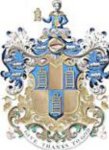 The men of the
family were involved in the Worshipful Company of Girdlers
- a livery company no longer involved in its original ancient craft of
belt making (except for supplying the sword belt for the Sword of State
and stole at coronations) but remaining active in charitable work.
Thomas Morrison
Fairclough was Master in 1872; Morrison Fairclough (his first son, 1846-1919) in 1882 - he presented enamel & gilt badges for the Wardens; and Frank
Fairclough (second son - who married at St Augustine Kilburn, a noted
ritualistic church, in 1887) in 1895. In 1904 Morrison and Frank were
assistants, and Walter, Arthur and Percy served as liverymen.
The men of the
family were involved in the Worshipful Company of Girdlers
- a livery company no longer involved in its original ancient craft of
belt making (except for supplying the sword belt for the Sword of State
and stole at coronations) but remaining active in charitable work.
Thomas Morrison
Fairclough was Master in 1872; Morrison Fairclough (his first son, 1846-1919) in 1882 - he presented enamel & gilt badges for the Wardens; and Frank
Fairclough (second son - who married at St Augustine Kilburn, a noted
ritualistic church, in 1887) in 1895. In 1904 Morrison and Frank were
assistants, and Walter, Arthur and Percy served as liverymen.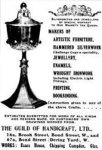
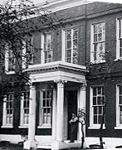 The family home
was at Essex House, 401 Bow Road, in Mile End, until increasing
prosperity enabled them to move, around 1880, to Pitarrow, Bramley
Hill, a Croydon mansion with a large staff to match. Essex house
[right, in 1890s] - perhaps once associated with Lady Essex - was acquired by
C.R. Ashbee in 1891 and became the home of a number of significant projects: the Survey of London (now part of
English Heritage); the Essex House Press (which took over William
Morris' Kelmscott Press after his death, and produced much significant
and beautiful work), and the Guild of Handicraft (which began at
Toynbee Hall, as a silver- and metal-work studio in the Arts and Crafts
tradition - poster right), both of which moved to Chipping Camden in 1902; they no longer exist, but their influence lives on.
The family home
was at Essex House, 401 Bow Road, in Mile End, until increasing
prosperity enabled them to move, around 1880, to Pitarrow, Bramley
Hill, a Croydon mansion with a large staff to match. Essex house
[right, in 1890s] - perhaps once associated with Lady Essex - was acquired by
C.R. Ashbee in 1891 and became the home of a number of significant projects: the Survey of London (now part of
English Heritage); the Essex House Press (which took over William
Morris' Kelmscott Press after his death, and produced much significant
and beautiful work), and the Guild of Handicraft (which began at
Toynbee Hall, as a silver- and metal-work studio in the Arts and Crafts
tradition - poster right), both of which moved to Chipping Camden in 1902; they no longer exist, but their influence lives on.JOHN DOWSETT (warden 1860)
was a gentleman of
8 New Road. He leased various properties, including two (for 21 year
terms) in Betts Street which formed part of the Drapers' Company portfolio
financing Edmanson's Almshouses in Stratford (established in 1695 to
provide
twelve almshouses for poor men and women, and afterwards to employ the
rents for the use of such poor who were either inhabitants in the
precincts of St Catherine or decayed sail-makers or their widows
inhabiting there or elsewhere):
in 1840, a dwelling house and grounds for £35 (paying £1,050 for the
contents of its sugar-houses) and in 1843 number 4a, at £10. As
one of the four trustees of the Stepney, Ratcliff
and St George's Benefit Building Society (No 2), he entered into
mortgages on behalf of the society.
 He must have prospered, since in the early 1870s he acquired Leyton House, Stratford [left] as his residence. This was a three-storeyed redbrick building with a front of seven bays, built
about 1706 by David Gansel, which had an interesting history and
succession of tenants, including Alderman Thomas Sidney (Lord Mayor of
London 1853-54) and thereafter the mother of William Morris (who was born in Walthamstow). Its history is fully detailed here,
though it does not refer to the Dowsetts' ocupancy. John Dowsett died
in 1873 (at the home of T. Gardner, Esq), aged 76. In 1906 the property
was leased by Samuel Henry Dowsett Esq (? John's son,
born 1846) to His Majesty's Postmaster General for 21 years, at £55 per
year, but it was demolished in 1913; the site was occupied by
the London Electric Wire Works, and later developed for light industrial and residential accommodation. [Samuel Henry Kaonohiulaokalani Dowsett was a successful entrepreneur in Hawaii, the third generation of his family there - what relation was he?]
He must have prospered, since in the early 1870s he acquired Leyton House, Stratford [left] as his residence. This was a three-storeyed redbrick building with a front of seven bays, built
about 1706 by David Gansel, which had an interesting history and
succession of tenants, including Alderman Thomas Sidney (Lord Mayor of
London 1853-54) and thereafter the mother of William Morris (who was born in Walthamstow). Its history is fully detailed here,
though it does not refer to the Dowsetts' ocupancy. John Dowsett died
in 1873 (at the home of T. Gardner, Esq), aged 76. In 1906 the property
was leased by Samuel Henry Dowsett Esq (? John's son,
born 1846) to His Majesty's Postmaster General for 21 years, at £55 per
year, but it was demolished in 1913; the site was occupied by
the London Electric Wire Works, and later developed for light industrial and residential accommodation. [Samuel Henry Kaonohiulaokalani Dowsett was a successful entrepreneur in Hawaii, the third generation of his family there - what relation was he?]
 In the middle years of the 19th century, at 7 Clark[e]'s Terrace, Cannon Street Road, lived Edward Augustus Cory MD FSA MRCS who wrote a textbook The Physical and Medical Management of Children: adapted for general perusal
which went through several editions (eg the enlarged 5th edition of
1844, J. Draper). He was well-known in the area, and a regular writer
to the medical journals of the time; here
are some of his letters, which show him to be enlightened in his
approach - on the treatment of 'hysteria', malignant cholera, medicines
for children, midwifery issues, and the delivery of twins - and also
quick to defend his reputation. He died (at Banstead) on 8 July 1854.
His son Frederick Charles Cory MD MRCS followed in his father's
footsteps: he was admitted as a Doctor of Medicine in 1853, and became
a Fellow of the Obstetrical Society of London (serving on its Council
1867-69); living at 8 Nassau Place, Commercial Road [the south side, just east of Cannon Street Road]. He susbscribed to
the Scripture Readers' journal.
In the middle years of the 19th century, at 7 Clark[e]'s Terrace, Cannon Street Road, lived Edward Augustus Cory MD FSA MRCS who wrote a textbook The Physical and Medical Management of Children: adapted for general perusal
which went through several editions (eg the enlarged 5th edition of
1844, J. Draper). He was well-known in the area, and a regular writer
to the medical journals of the time; here
are some of his letters, which show him to be enlightened in his
approach - on the treatment of 'hysteria', malignant cholera, medicines
for children, midwifery issues, and the delivery of twins - and also
quick to defend his reputation. He died (at Banstead) on 8 July 1854.
His son Frederick Charles Cory MD MRCS followed in his father's
footsteps: he was admitted as a Doctor of Medicine in 1853, and became
a Fellow of the Obstetrical Society of London (serving on its Council
1867-69); living at 8 Nassau Place, Commercial Road [the south side, just east of Cannon Street Road]. He susbscribed to
the Scripture Readers' journal. | With respect to my patent fore-sail, I had it bent during the bad weather at our first sailing, and it certainly answers every purpose that the patentee intended it; for at different times during the bad weather, I sent the watch forward to reef the fore-sail, which could be done in three or four minutes, without starting tack or sheet. |
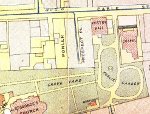 In 1852 the partnership between John
Ponler, Janet Ponler, and Hugh Stalker Ponler, Timber Merchants, of St.
George's-place, St George's in the East, was dissolved by mutual
consent so far as regards Janet Ponler. The 1878 Vestry map [left] shows the firm's yard on Cable Street, to the north of the churchyard. His brother Hugh Stalker
Ponler died in 1854. (In the 1841 census Hugh was living at 'Back Road'
with his sister Margaret, and in 1851 at 14 St George's Place with his
widowed mother, and Margaret; but he had also set up house with Mary
Ann Dolder at 2 King David Lane; they did not marry, but had two
children, James Hugh in 1837 and Sarah Ann in 1839, both baptized at St
Paul Shadwell: Sarah died the following year. He is variously described
in registers as sawyer, timber merchant and mariner.)
In 1852 the partnership between John
Ponler, Janet Ponler, and Hugh Stalker Ponler, Timber Merchants, of St.
George's-place, St George's in the East, was dissolved by mutual
consent so far as regards Janet Ponler. The 1878 Vestry map [left] shows the firm's yard on Cable Street, to the north of the churchyard. His brother Hugh Stalker
Ponler died in 1854. (In the 1841 census Hugh was living at 'Back Road'
with his sister Margaret, and in 1851 at 14 St George's Place with his
widowed mother, and Margaret; but he had also set up house with Mary
Ann Dolder at 2 King David Lane; they did not marry, but had two
children, James Hugh in 1837 and Sarah Ann in 1839, both baptized at St
Paul Shadwell: Sarah died the following year. He is variously described
in registers as sawyer, timber merchant and mariner.)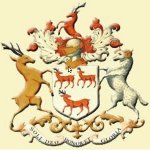
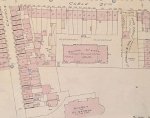 The
business later moved to 228 Cable Street [left on Goad's 1899 insurance map]: a father and son partnership
(both called John) was dissolved in 1875. Despite the family
connections with St Paul Shadwell, a seamen's church, John was
churchwarden at St George-in-the-East in 1863. He was a Warden of the Worshipful Company of Leathersellers [crest right] in 1866. William Street, off Cannon Street Road, was re-named Ponler Street in the mid-19th century.
The
business later moved to 228 Cable Street [left on Goad's 1899 insurance map]: a father and son partnership
(both called John) was dissolved in 1875. Despite the family
connections with St Paul Shadwell, a seamen's church, John was
churchwarden at St George-in-the-East in 1863. He was a Warden of the Worshipful Company of Leathersellers [crest right] in 1866. William Street, off Cannon Street Road, was re-named Ponler Street in the mid-19th century.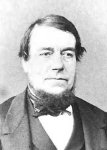 Thomas
Herbert (1811-76) was a member of the Vestry from the time when it was
constituted in 1855 under the Metropolis Management Act, and in due
course chaired the Sewers / Sanitary Committee (for whom he gave a dinner a few
weeks before his death). He was in turn an overseer, trustee and churchwarden
of the parish - deploring the scandal of the ritualism riots and
working for harmony in the years that followed. An obituary spoke of
his steady adherence to any plan to
which he had become attached. Slow to decide - the result of earnest
thought and consideration - yet, when once resolved upon, nothing moved
him from his purpose ... By no means an orator, possessed the faculty
of pegging away until he made his view known, those view being
generally in favour of a somewhat close economy ...To this trait ... he
owed the alienation of many who would have been friendly with him but
who now that he is gone can but ackowledge the ability which
distinguished his actions.
Thomas
Herbert (1811-76) was a member of the Vestry from the time when it was
constituted in 1855 under the Metropolis Management Act, and in due
course chaired the Sewers / Sanitary Committee (for whom he gave a dinner a few
weeks before his death). He was in turn an overseer, trustee and churchwarden
of the parish - deploring the scandal of the ritualism riots and
working for harmony in the years that followed. An obituary spoke of
his steady adherence to any plan to
which he had become attached. Slow to decide - the result of earnest
thought and consideration - yet, when once resolved upon, nothing moved
him from his purpose ... By no means an orator, possessed the faculty
of pegging away until he made his view known, those view being
generally in favour of a somewhat close economy ...To this trait ... he
owed the alienation of many who would have been friendly with him but
who now that he is gone can but ackowledge the ability which
distinguished his actions.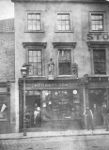 Born
in the parish, he was the second son of Thomas Herbert, a tidewaiter
(customs officer). He married Sarah Brinkhurst in 1836; they had six
children. He learned his trade as a scalemaker with Thomas Pallet in
Leadenhall Street, with whom he worked for seventeen years; in 1842 he
started his own business in a shed in the back garden of wife's father
Benjamin in Catherine [later Anthony] Street - where his first regular
customer was George Cooper,
churchwarden 30 years earlier - moving the next year to a shop in
Cannon Street Road, and taking on two of Pallet's men. Around 1849 he
moved to premises at 47 Ratcliff Highway [later St George's Street, now
The Highway], four doors from the Old Rose, adding a new shop front and workshops at the rear - right
in the 1870s. In 1857 he took over George Birch's business in
Chichester Place [later Grays Inn Road], and in 1867 purchased Wood's,
who had traded at 6-7 West Smithfield in the City for over a century -
well-timed, as Smithfield meat market opened the following year. Thomas
retired in 1873.
Born
in the parish, he was the second son of Thomas Herbert, a tidewaiter
(customs officer). He married Sarah Brinkhurst in 1836; they had six
children. He learned his trade as a scalemaker with Thomas Pallet in
Leadenhall Street, with whom he worked for seventeen years; in 1842 he
started his own business in a shed in the back garden of wife's father
Benjamin in Catherine [later Anthony] Street - where his first regular
customer was George Cooper,
churchwarden 30 years earlier - moving the next year to a shop in
Cannon Street Road, and taking on two of Pallet's men. Around 1849 he
moved to premises at 47 Ratcliff Highway [later St George's Street, now
The Highway], four doors from the Old Rose, adding a new shop front and workshops at the rear - right
in the 1870s. In 1857 he took over George Birch's business in
Chichester Place [later Grays Inn Road], and in 1867 purchased Wood's,
who had traded at 6-7 West Smithfield in the City for over a century -
well-timed, as Smithfield meat market opened the following year. Thomas
retired in 1873.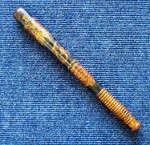 George and
William, the other sons, dissolved their partnership a few days before
their father's death. George and his wife Mary Ann lived over the shop
- they had four rooms, with a kitchen parlour and scullery at the back
of the shop. In 1868 George had enrolled as a Special Constable, in the
wake of the Fenian rising and the subsequent Clerkenwell explosion -
more details here; left is his truncheon.
George and
William, the other sons, dissolved their partnership a few days before
their father's death. George and his wife Mary Ann lived over the shop
- they had four rooms, with a kitchen parlour and scullery at the back
of the shop. In 1868 George had enrolled as a Special Constable, in the
wake of the Fenian rising and the subsequent Clerkenwell explosion -
more details here; left is his truncheon.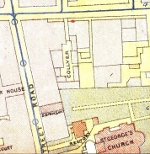 He was born 11 March 1822 on the island of St Helena, as were
five of his ten siblings. His parents Nathaniel Collier and Charlotte
Knipe were married there in 1817, and lived there on and off for a
number of years - was his father working for the East India Company, or
guarding Napoleon? His father had been bound as an apprentice to the Mercers' Company
[nowadays the 'premier' livery company], but - presumably because he
had left the country - had delayed claiming his freedom of the company,
and of the City (a linked benefit), for which he had qualified in 1808,
until some point between the birth of his two sons Nathaniel and
Richard, between 1818 and 1822. Under the rules, therefore, Richard
became the apprentice master (as a 'carrier') to Nathaniel's three
sons. Richard himself gained Mercers' and City freedom in 1843, and
married Sarah Partridge, in Hackney, the following year, and between
then and 1870 they had eleven children, seven of them born in the
parish. The 1878 Vestry map [right] shows
his works yard on Cable Street [previously 6 Back Road], just north of
the church. By 1901 he was living in Clissold Road, Stoke Newington,
with
his unmarried daughter Florence, and died in West Ham in 1905.
He was born 11 March 1822 on the island of St Helena, as were
five of his ten siblings. His parents Nathaniel Collier and Charlotte
Knipe were married there in 1817, and lived there on and off for a
number of years - was his father working for the East India Company, or
guarding Napoleon? His father had been bound as an apprentice to the Mercers' Company
[nowadays the 'premier' livery company], but - presumably because he
had left the country - had delayed claiming his freedom of the company,
and of the City (a linked benefit), for which he had qualified in 1808,
until some point between the birth of his two sons Nathaniel and
Richard, between 1818 and 1822. Under the rules, therefore, Richard
became the apprentice master (as a 'carrier') to Nathaniel's three
sons. Richard himself gained Mercers' and City freedom in 1843, and
married Sarah Partridge, in Hackney, the following year, and between
then and 1870 they had eleven children, seven of them born in the
parish. The 1878 Vestry map [right] shows
his works yard on Cable Street [previously 6 Back Road], just north of
the church. By 1901 he was living in Clissold Road, Stoke Newington,
with
his unmarried daughter Florence, and died in West Ham in 1905.|
MOSES JOHN HICKMAN, UNDERTAKER,
No. 1, PRINCE'S PLACE, COMMERCIAL ROAD EAST* (Corner of Morgan Street) and
No. 111, CANNON STREET ROAD, ST. GEORGE'S EAST (Corner of William Street)
Respectfully
submits the following Tariff of inclusive Charges for Funerals,
and
guarantees the equipage in all cases to be of the best description,
and
the obsequies performed with respectability and decorum.
CAUTION. I beg to inform the public that some undertakers and others have issued a fac-simile of my Prospectus, thereby deceiving them, by relying on extras to make up their bills, instead of keeping to the sum specified in their advertisements. I have no connection with any other establishment, and am only surprised that, in the present enlightenment although a sense of duty does not restrain education might make men abashed at the thought of being guilty of so mean an action as to rely on the merits of my productions to gain public favour. WALKING FUNERALS - Grown Persons £1/10/- CARRIAGE FUNERALS within Ten Miles of the General Post Office: A Carriage Funeral complete, with Coffin and all requirements £2 A Carriage Funeral, with separate Hearse and Mourning Coach, 1 Coffin, and all requirements A Carriage Funeral, with Hearse and Pair, and Mourning Coach and Pair, Coffin, &c A Carriage Funeral, with superior Coffin, Hearse & Pair, Mourning Coach and Pair, Velvets, Mutes, Pages, and all requirements A Carriage Funeral, with double-lid Coffin, Hearse and Four, and Mourning Coach and Pair, Ostrich Plumes to Hearse, and Horses, Mutes, Pages, &c £9 Leaden Coffin, stout Elm Shell and Case covered with fine Cloth, Hearse and Four, two Mourning Coaches (pairs), Ostrich Plumes and Velvets, Lid of Feathers, Mutes, Pages, &c., £20 CHILDREN'S CARRIAGE FUNERALS from £1/4/- Estimates given for Removals to or from all parts. Letters by post receive immediate attention. No extra charge for Removals from Hospitals. Oak and Lead Coffins on the shortest notice. AGENTS: Scotland - Edinburgh: James Pocock, 72, Charles-street; Greenock: Joseph Crookshanks, 41, West Blackhall-street. Ireland - Belfast : John Robson, 31, Chichester-street. |
Back to History | Back to Clergy 1729-1860 | Back to 18th Century Churchwardens